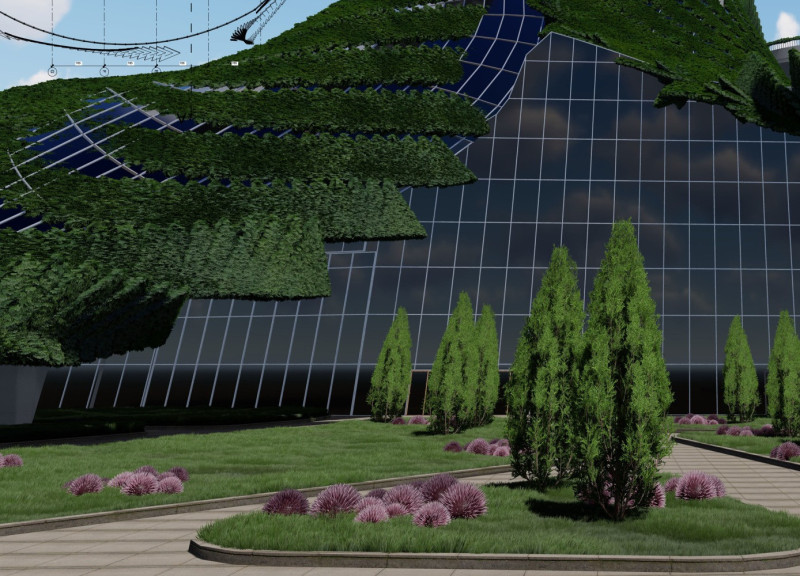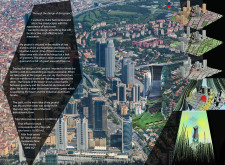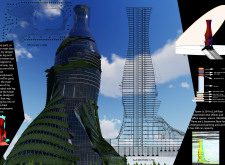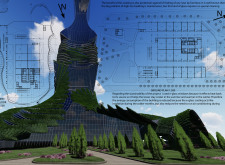5 key facts about this project
The primary function of the tower encompasses office space with a focus on creating a collaborative work environment while accommodating retail elements on the ground floor. The ground level is designed to serve both public and private needs, featuring gardens and café spaces that invite community interaction. The upper levels offer office spaces that enhance productivity with plenty of natural light, thanks to extensive glazing.
The unique design approach of this project lies in its innovative use of materials and form. The façade primarily consists of high-performance e-glass, which promotes energy efficiency while allowing for ample daylight. The use of aluminum in the structure adds durability and a modern aesthetic. Additionally, the incorporation of greenery into the façade represents a key aspect of the project's approach to sustainability, which facilitates biodiversity and contributes to improved air quality.
Sustainable architectural practices are prevalent throughout the design. Natural ventilation is utilized alongside rainwater harvesting systems, minimizing environmental impact while providing functional benefits. This attention to sustainability helps define the project within the context of current architectural practices and addresses urban livability.
Another distinct feature of the project is its dynamic architectural form. The twisting geometry not only enhances aesthetic appeal but also supports functional efficiency by maximizing views of the surrounding landscape. This design approach sets it apart from conventional tower designs, showcasing a blend of creativity and pragmatism that resonates within the urban context.
In summary, the architectural design of this tower represents a thoughtful integration of form and function, prioritizing sustainability and community interaction within an urban environment. The project's unique design features and material choices exemplify contemporary architectural practices. For those interested in a deeper understanding of this project, exploring the architectural plans, architectural sections, and architectural designs will provide further insights into the innovative ideas that informed this work.


























